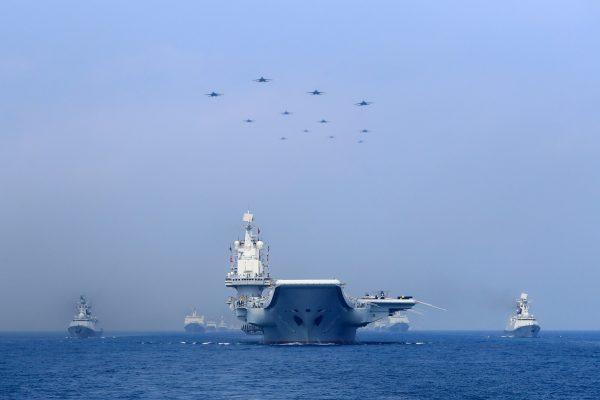An expert said mainland Chinese military leaders told her that they would be ready to unify Taiwan by force in one year, while another China expert told The Epoch Times that Chinese leader Xi Jinping would be too busy maintaining his position as party boss over the next 20 months.
U.S.-based China affairs expert Tang Jingyuan told The Epoch Times on Feb. 25: “I don’t think Xi Jinping will unify Taiwan by force before he can make sure that he will take another term as [Chinese Communist Party (CCP)] boss. Currently, Xi is struggling with other factions within the CCP. It’s too risky for him to take any aggressive action.”
New York-based expert Tang Hao shared a similar view. He said that with support from the United States and its allies in the region, such as Japan and Australia, the “Chinese regime won’t dare to [start] a war in the Taiwan Strait and even the South China Sea in the near future.”

Smell the Gunpowder
China’s Eastern Theater Command announced that it conducted military drills in disputed waters close to Taiwan in the South China Sea on Feb. 25, and a large number of warplanes joined the drills.
Taiwan is a self-ruled island that is located in the southeast of China. The 110-mile-wide 230-mile-long body of water separating the island and continental Asia is the Taiwan Strait, which connects the South China Sea and the East China Sea. The narrowest part of the strait is about 81 miles.
The Chinese regime claims the island as its own, despite the fact that Taiwan is a de facto independent country, with its own military, democratically-elected government, and constitution.
Since 1949, China and Taiwan have had independent forms of government, and the two sides fought several times in the 1950s and 1960s. Since that time, while there hasn’t been an armed confrontation across the strait, the situation hasn’t eased either. Instead, it has deteriorated in recent months.

A War?
The question of when China will launch a war to unify Taiwan isn’t new, but became a hot topic after Biden’s inauguration and the development of U.S. policy to Taiwan became unclear.She then cited Chinese officials’ public comments and information she received from China, and said, “Specifically, I believe Xi Jinping will use force to compel Taiwan to unite with the mainland once he is confident in the Chinese military’s ability to succeed in relevant joint operations, like an amphibious attack.”
Tang Jingyuan concurred about the Chinese army preparing for a possible war to unify Taiwan, but disagreed about the timing.
“Xi Jinping uses the term ‘unification’ rather than ‘occupation’ in Taiwan,” said Tang. “Unification includes control of the island and rule of the island. It’s a systematic action, and can’t be solved by a war.”

Tang said he believed Beijing wouldn’t launch a war in the Taiwan Strait in the next two years for two reasons.
“The second reason is that the United States, Japan, Australia, India, and other U.S. allies will support Taiwan,” if China initiates the conflict he said. “The Chinese military isn’t ready to face a war with all these countries.”





